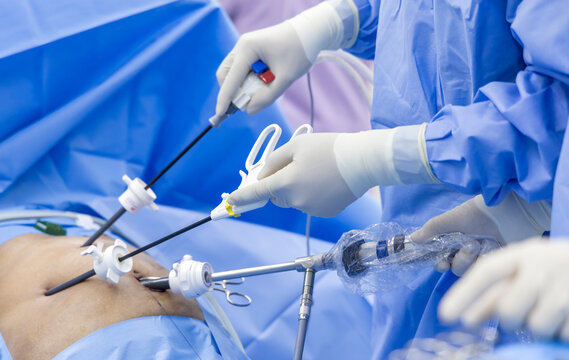Advancements and innovations in laparoscopic gynecology are continuously improving surgical techniques, patient outcomes, and the overall experience of surgery.
Here are some key advancements shaping the future of laparoscopic gynecology:
- Robot-assisted Surgery: Incorporation of robotic systems like the da Vinci Surgical System allows for greater precision and maneuverability during laparoscopic procedures. Surgeons can perform complex procedures with enhanced dexterity, leading to potentially better surgical outcomes and faster recovery times.
- Single-Incision Laparoscopic Surgery (SILS): SILS involves performing laparoscopic procedures through a single small incision, typically in the belly button. This technique reduces visible scarring and may lead to less post-operative pain and quicker recovery compared to traditional multi-port laparoscopy.
- Mini-laparoscopy: Mini-laparoscopy uses smaller instruments and ports than traditional laparoscopy, resulting in even smaller scars and potentially reducing post-operative pain and recovery time further.
- Enhanced Imaging and Visualization: Advancements in laparoscopic cameras and imaging technologies provide clearer and higher-definition images of the surgical site. This improves the surgeon’s ability to navigate and perform delicate maneuvers with precision.
- 3D Laparoscopy: Some systems now offer three-dimensional visualization during laparoscopic surgery, providing depth perception that enhances the surgeon’s spatial awareness and may improve surgical accuracy.
- Energy-based Devices: Advanced energy-based devices such as advanced bipolar and ultrasonic instruments are becoming more refined. These tools help in sealing blood vessels, cutting tissues, and reducing operative time and complications.
- Virtual Reality (VR) and Augmented Reality (AR): Integration of VR and AR technologies into laparoscopic training and surgery with a Laparoscopic gynecologist in Jaipur planning allows for enhanced simulation and pre-operative planning. Surgeons can practice procedures in a virtual environment and visualize patient anatomy in a more interactive manner.
- Natural Orifice Transluminal Endoscopic Surgery (NOTES): Although still in experimental stages for gynecology, NOTES involves accessing the abdominal cavity through natural orifices (e.g., vagina) rather than external incisions. It holds promise for further minimizing visible scars and potentially reducing surgical trauma.
- Telemedicine and Remote Surgery: With advancements in telecommunications and robotics, remote laparoscopic surgeries are becoming a possibility. This allows expert surgeons to perform procedures on patients in remote locations, expanding access to specialized care.
- Patient-Centered Innovations: Advances in anesthesia, pain management techniques, and enhanced recovery protocols (ERAS) are improving the overall patient experience and shortening hospital stays following laparoscopic gynecological surgery.
These advancements are collectively contributing to safer, more effective, and less invasive surgical options in gynecology, ultimately benefiting patients by reducing complications, enhancing recovery, and improving quality of care.




.png)

Comments